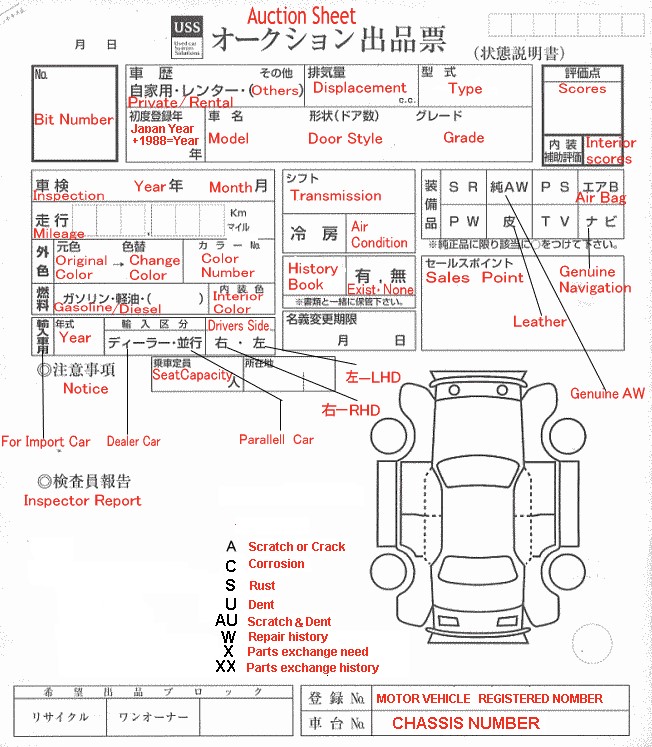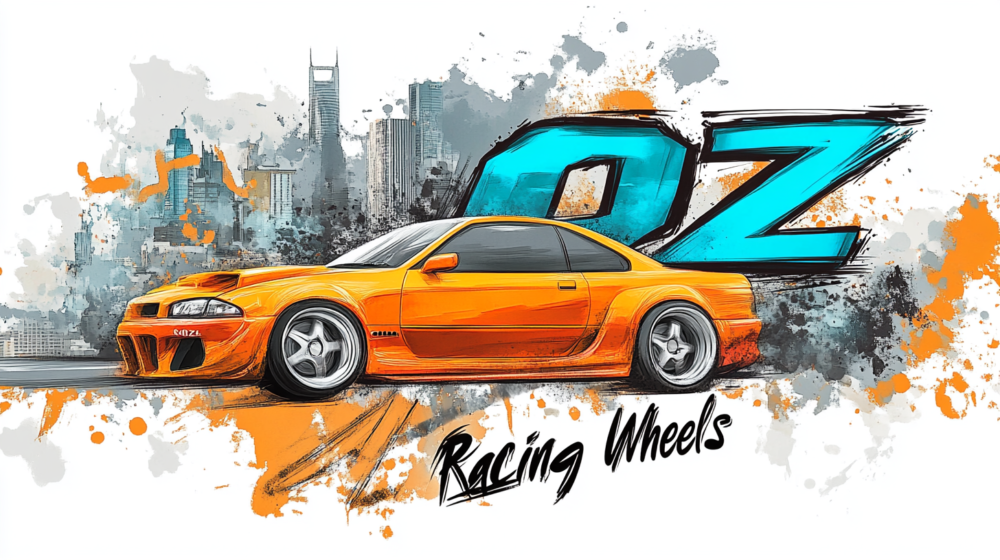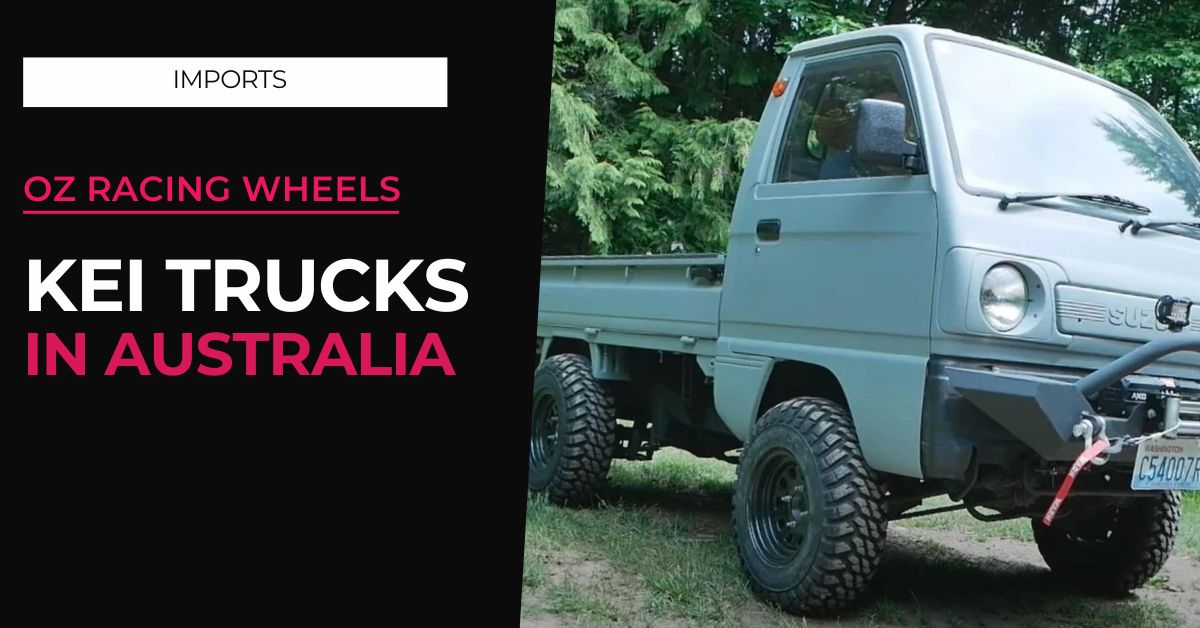I’ve had JDM rides my whole driving life (spanning four decades 😳), and it has to be said cars from Japan are higher spec, better tuned, and more unique than your average Nissan, Honda, or Toyota sold at regular Aussie dealers.
If you want to import a car from Japan, such as from the Japanese car auctions, your easiest option is to enlist one of the many brokers. Yes, you pay a fee, but you also take out the uncertainty of the procedure.
A good import broker will discuss with you what type of car you want – make, model, colour, spec, manual/auto/tiptronic, turbo, non-turbo, glass roof siR (Honda CRX reference), and so forth.
They’ll also ask you what grade of car you want, which is basically the Japanese auction rating based on interior and exterior condition (more on this later).
I highly recommend going through the process of importing a car from Japan. There’s nothing quite like waiting for that ship to come in with your new ride on it.
Let’s take a look at the ins and outs of importing a car from Japan into Australia:
Popular cars imported from Japan into Australia
You probably have a type of car in mind already, but below are some of the most common cars imported from Australia according to brokers:
- Nissan Skyline (e.g., R32, R33, R34)
- Nissan Silvia (e.g., S13, S14, S15)
- Nissan GT-R (e.g., R32, R33, R34, R35)
- Honda Integra Type R (DC2, DC5)
- Honda NSX
- Toyota Supra (e.g., JZA80)
- Mazda RX-7 (e.g., FD3S)
- Mitsubishi Lancer Evolution (e.g., Evo IV, Evo V, Evo VI)
- Subaru Impreza WRX STI (e.g., GC8, GD, GR)
- Toyota Chaser
- Toyota Soarer (Lexus SC300/400)
- Mitsubishi Delica Space Gear
- Suzuki Cappuccino
- Daihatsu Copen
- Mazda MX-5 (Eunos Roadster)
- Toyota Alphard and Vellfire (badass vans)
Why import a car from Japan?
There’s nothing quite like a bullet point list, so here’s some convincing reasons to import a car from Japan.
- Unique models – Japan specs are different. They save the best from themselves, and mass export the regular stuff for regular Aussies. If you do your research you’ll be able to pick a spec which your mates will truly be in awe of.
- High quality vehicles – You probably know already how well built Japanese cars are. Take the Toyota Land Cruiser for example, one of the most loved vehicles for harsh Aussie conditions. I ragged my Land Cruiser around Australia, through endless dirt, dunes, beaches, rivers, and a pretty dubious salt lake. Absolutely bullet proof.
- Lower prices – The auction cost plus shipping cost is usually lower than what you would pay for a similar model in Australia. There are economic reasons for this, and the strict “Shaken” test in Japan makes cars more costly to maintain the older they get. These tests start 3 years from first registration, then every 2 years, and effectively encourage the Japanese to buy newer cars. The benefit of that, for us, is steeper depreciation of immaculately maintained slightly ageing cars.
- Variety – Unique JDM (Japanese Domestic Market) models are what appeals to us the most, and there’s some fantastic JDM sports cars. Then you have Japanese “Kei” cars – small enough to park in your wardrobe, but big enough to make you feel like Godzilla on wheels.
- Potential for investment – I bet you’ve never thought of buying a Japanese car for investment, but believe me these cars can explode in value when they reach a certain age. You’ll need to buy the right spec, preferably something unique, iconic, or limited edition and sit on it for however many years. Put it this way, I bought my first Honda CRX for $500. That same car today, in 2024, would likely reach $20,000.
- Customisation potential – Put your Fords and Holdens aside, because there’s nothing quite like JDM car enthusiasts when it comes to customisation potential. Not only will you find an incredible community of enthusiasts for whatever JDM car you choose, you’ll find all manner of modification parts and knowledge on how to turn that car into whatever level of beast you may want.
- Low mileage – Have you looked in dismay on Autotrader at all the high km cars for “You’re Dreaming” money? You won’t find the same on Japanese car auctions. Plenty of low-mileage cars to be had, in fantastic condition, for less money than your neighbour will pay for a lower spec car.
It’s worth covering the drawbacks as well, so let’s skirt over them here. I thought about small print, because I know you don’t really care about this stuff, but here you go if you’re boring:
Import costs can be high if you don’t do enough research and choose a cowboy importer. Compliance with Australian regulations can be a pain – I had to pay for a baby seat ISOFIX anchor point for a sports coupe rear seat which wasn’t even big enough to fit a baby seat. Then I had to strip off all the window tint because it was too cool for Aussie regs. Insurance companies may not recognise your car, or make you pay more because of it (check with insurance companies before importing). Parts can be harder to get, but if you do due diligence you’ll find many JDM cars share the same parts as Australian domestic Japanese cars.
Consider all the above minor cons. Having owned numerous JDM cars over my life I can only recall minor problems. Most of the time they weren’t my problems, rather my mechanic ordering the wrong part and causing a slight delay.
The import procedure – rules and regulations
It may come as no surprise Australia has some of the strictest laws prohibiting the import of most vehicles. I suggested using an import broker, right?
The basic law states a vehicle may only be imported if it has never been sold locally in full volume. This applies to vehicles that are essentially the same vehicle with different badging (such as Ford Laser or Mazda 323).
A vehicle is considered to be a different model if it varies substantially in design to a local car. The Nissan 300ZX is a great example as it was only available in Australia as a 2+2 seater version. That means we can import the Jap spec 2 seater Nissan 300ZX. Different engine type or size does not classify a car as a different model, so be wary of that.
Once a vehicle is deemed to be a different model it must pass the S.E.V.S. criteria in order to be allowed for import.
Specialist & Enthusiast Vehicle Scheme (S.E.V.S.)
All vehicles are judged using the S.E.V.S. ruling system. There is no easy way to explain this quickly but basically vehicles must meet two out of the following 4 criteria:
- Be significantly different in appearance to vehicles sold new in Australia
- Have unusual design features to anything sold new locally
- Performance greater than 105kw/ton, or unusually good economy
- Be featured in specialist publications (High Performance Imports, Zoom, etc.)
What if a car does not meet S.E.V.S. criteria?
Obviously not all cars would pass these criteria. Most of the popular JDM cars would have been judged already, but if there’s a vehicle that you think would be eligible for import that is not listed, it’s worth getting an import specialist to lodge an application for you.
Import approval
Just because the vehicle type has been approved for importing, it doesn’t mean you can just buy one and ship it to Australia.
Any vehicle that comes into Australia needs an import permit issued by DOTARS in Canberra. Under the current laws, the import approval for SEVS cars must be lodged by the compliance workshop (RAWS). An import broker will help you with this part of the process if necessary.
Personal Imports – Circumventing import regulations!
Did you know you can import any car as a personal import if you have owned and used it for at least 12 months overseas first?
This might be a good incentive to go and live in Japan for a year, or even the UK or America where JDM imports are very common.
You’ll still have to apply for an import approval for a personal import, but it’s an easier process if these circumstances apply to you. You will need to provide registration and insurance paperwork to prove ownership history and use of the vehicle.
I actually did this myself – I stayed in the UK for a year where I bought a top spec JDM Honda CRX in black, with VTEC, and a rare as rocking horse poo glass roof. When I shipped the car to Australia it was one of only a few in the country. Sadly there came a time when I had to sell it, but I made a great profit.
Importing 1988 and older cars
Any vehicle built in 1988 or older is allowed for import into Australia without restriction, however as with any other vehicle you will need to get an import approval from DOTARS in Canberra.
These older cars don’t need to go through the normal SEVS compliance process, but you will need to do some basic modifications and get an engineers report proving that the car meets the relevant ADR’s for the year of manufacture. The work necessary for this will vary between different cars and also which state of Australia you live in, but generally speaking allow up to $1500 for compliance work on most popular 1988 models.
CAR VX report – an essential report before you buy a Japanese JDM car
Before we cover how the Japanese auction grade sheets work, here’s an important tip – if you can get the chassis number of a JDM car, you can pay a few bucks for a very thorough history report.
A CAR VX report will give you information on factory recalls, accidents & repairs, previous auction gradings (many cars go through various auctions before being exported), and a very good idea of mileage over the life of the car to date.
If you have a JDM car already, and like most grey imports were given very little history of the car when you purchased it, a CAR VX report is a fantastic investment, and will add value if you wish to sell the car.
CAR VX can be found here – https://carvx.jp/
Japanese Auction Grades – How they work
Most auctions (and some stock dealers) have an auction grading system which uses numbers and letters to give you a very thorough view of what condition a vehicle is in.
It can be hard for us Aussies to understand the Japanese scrawls on an auction inspection sheet, but not impossible. The most prominent indicator of a car auction grade is a letter and a number, such as “4” and “B”, which gives you a great overall indicator of the condition of a car.
An example Japanese Car Auction grade sheet
Auction sheets do vary, but most will be very similar to the sample grade sheet below which shows a basic annotation in red to help you familiarise yourself with the various aspects.
The auction sheet, once translated, will help you understand if there is a full service history and car documentation, the condition of the exterior and Interior, leather seats, and so forth.

Auction sheet: Options
If you’re looking for a car with factory options, then the below acronyms should help you identify them on the auction sheet:
- AC-Air conditioner
- SR-Sun roof
- AW -Alloy Wheels
- PS – Power steering
- PW – Electric window
- FA – Automatic gearbox
- F5 – 5Speed gearbox
- F6 – 6 Speed gearbox
Auction sheet: Car Diagram & Overall Grade
All inspection sheets will have a diagram of the car’s body. There will be a lot of different marks inspectors will place over this diagram to describe what they see.
The following is the most common marking scheme:
| AUCTION GRADE (Exterior) | |||
| S | As new condition, under 5,000km | ||
| 5 | Vehicle is like new. All original body parts. No repair needed on vehicle. Usually only given to vehicles less than 3 years old. | ||
| 4.5 | Vehicle is in excellent condition. No slight scratches or dents. | ||
| 4 | Vehicle in good condition, few scratches/dents due to normal wear as you would get with any normal vehicle. | ||
| 3.5 | Vehicle has a few scratches or dents visibly. The grade is usually given to a vehicle in average condition. | ||
| 3 | Various scratches or dents, some paint blemishes. | ||
| 2 | wholly badly corroded, non standard car, or modified car | ||
| 1 | inferior car, basically a pile of you know what. OR … very heavily modified car. | ||
| RA or A1 | Vehicle has been in a minor accident. It has been repaired to an acceptable standard. | ||
| R or A | A vehicle which has been in an accident where some parts have been repaired or replaced. | ||
| AUCTION GRADE (Interior) | |||
| A | As new condition. No faults. | ||
| B | Very clean condition poss. very slightly dirty. | ||
| C | Clean but with cigarette burn. | ||
| D | Dirty or stinky or big wear/rip on seats | ||
For the record, when I first imported a JDM car circa 2010 I struggled to find the variety of A1s and B1s on the auction sheet. It was a grade 4B van, and despite being around 10 years old when I imported it, was almost immaculate.
As of 2024, my most recent import – a Toyota Vellfire – was a little rough around the edges despite also being a 4B grade. It was clear the interior had sun damage, with a melted dash, faded interior plastics, and tatty gear knob. From discussions with various importers it seems the Japanese auction grading system isn’t as stringent as it once was, but still a very good guide.
Auction sheet: Dents and Scratches
Usually you’ll find a combination of letters and numbers dotted around the image of the car.
This is what they mean:
A1: Scratch or crack, 2- 3cm
A2: Scratch or crack, less than 10cm
A3: Scratch or crack, more than 20cm
U or B1: Dent of “a bean “size
U or B2: Dent, less than 10cm
U or B3: Dent, more than 20cm
W1: Repaint in as new condition
W2: Repair & repaint in good condition
W3: Repair but the gloss of surface is bad



